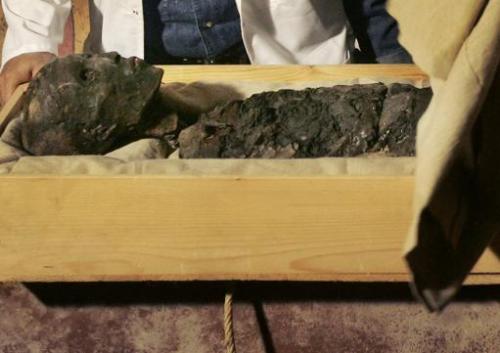
 WELCOME TO THE ASOR BLOG
WELCOME TO THE ASOR BLOG
The American Schools of Oriental Research (ASOR) is the preeminent society for individuals interested in the archaeology of the eastern Mediterranean and the Biblical Lands. This blog is intended to facilitate ASOR’s mission “to initiate, encourage and support research into, and public understanding of, the cultures and history of the Near East from the earliest times.”
Archaeology Weekly Roundup! 11-15-13
If you missed anything from the ASOR Facebook or Twitter pages this week, don’t worry. We’ve rounded up some of this week’s archaeology news into one convenient post. If we missed any major archaeological stories from this week, feel free to let us know in the comment section!

‘Roman Child’s Coffin’ Opened for First Time
The 1,600-year-old coffin found last month is scheduled to be opened today. Experts believe the coffin is that of a Roman Britain child, and that it represents an early example of Christian burial.
Romania Welcomes Retrieval of 145 Ancient Dacian Gold Coins
145 ancient Dacian gold coins will be returned to Romania as evidence for a court trial.
Preparing for Death In Bronze Age Galloway
Archaeologists say that the discovery of unused Bronze Age cists suggests they were built in anticipation of use, showing the forethought and planning of an individuals burial after death.
More Burials from the 12th – 18th Century Discovered in the Oldest Polish School
Human remains from the 12th to 18th century have been discovered on the campus of one of the oldest schools Europe, confirming it was a cemetery during the Middle Ages.
Roman Statue Stolen From Carthage
Over the weekend, a fifth-century A.D. Roman statue was stolen from the Early-Christian Museum in Carthage.
Thousand-year Old Swordsman Rises from the Earth
Archaeology enthusiasts in Finland discovered an early crusader that was buried with two swords from different eras.
Early Uses of Chili Peppers in Mexico
Researchers say that chili peppers may have been used to make spicy beverages in Mexico more than 2,000 years ago.
Written on Her Bones: The Life of a Mixtec Woman
A new exhibition at at the Regional Historical Museum of Ensenada tells the story of a young Late Post Classic period Mixtec woman from the study of her skeleton.
Piece of Civil War Ironclad Brought to Surface in Savannah
Archaeologists and U.S. Navy divers are planning to raise the Civil War ironclad ship, the CSS Georgia, from the Savannah River. The project is estimated to cost the U.S. Army Corps of Engineers roughly $9.5 million.
Ancient Naval Battle Rises Above the Waves
Underwater archaeologists are using the latest techniques to survey the Battle of the Egadi, the first ancient naval battle site to be discovered in its entirety.
Tutankhamun May Have Spontaneously Combusted
Now, an Egyptologist and forensic scientists believe the embalming oils used in King Tutankhamun’s mummification caused a chemical reaction resulting in the spontaneous combustion of his body sealed in his coffin.
All content provided on this blog is for informational purposes only. The American Schools of Oriental Research (ASOR) makes no representations as to the accuracy or completeness of any information on this blog or found by following any link on this blog. ASOR will not be liable for any errors or omissions in this information. ASOR will not be liable for any losses, injuries, or damages from the display or use of this information. The opinions expressed by Bloggers and those providing comments are theirs alone, and do not reflect the opinions of ASOR or any employee thereof.
 WELCOME TO THE ASOR BLOG
WELCOME TO THE ASOR BLOG